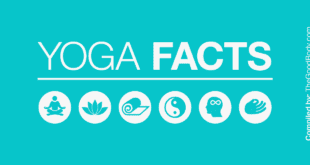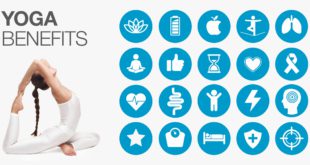Key Yoga Statistics: Industry Trends and Data
- There are over 300 million yoga practitioners worldwide.
- 10% of the US population, 34.4 million people, practice yoga.
- Yoga grew in popularity by 63.8% between 2010 and 2021.
- There are currently 48,547 yoga and pilates studios in the US, and 100,000 teachers registered with the Yoga Alliance.
- Women aged between 30 and 49 years old are the group who practice yoga the most.
- 28% of yoga practitioners are male.
- 10% of yogis experience pain following a yoga session.
- Global yoga industry statistics estimate the size of the market to be over $88 billion.
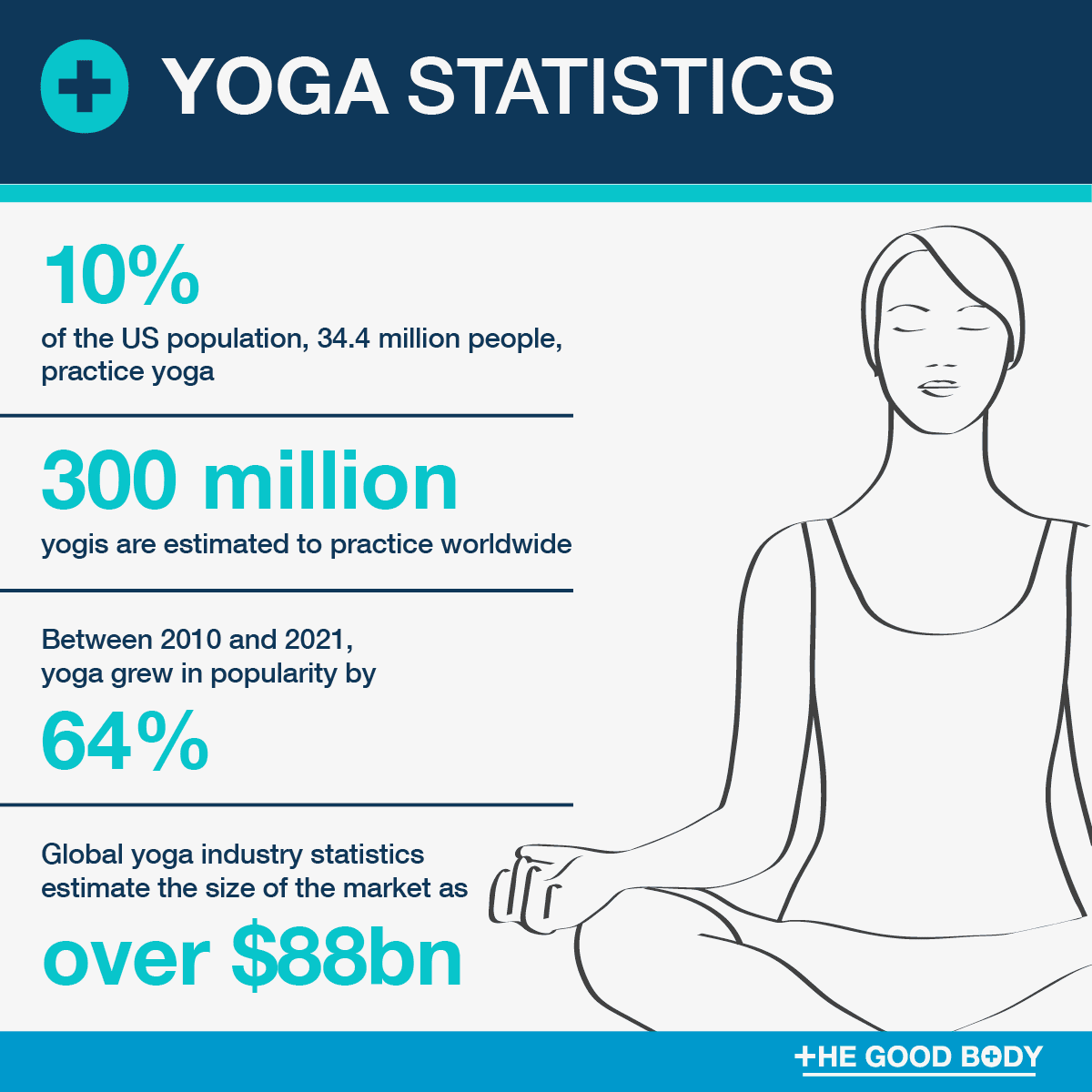
How many people practice yoga in America?
- It’s estimated that 34.4 million people practice yoga in America.[1]
According to an estimate by Statista, that’s an incredible 10% of the current US population, making yoga more popular than golf!
Another survey, conducted by the Yoga Alliance and Yoga Journal, found that one in three Americans have tried yoga at least once.[2]
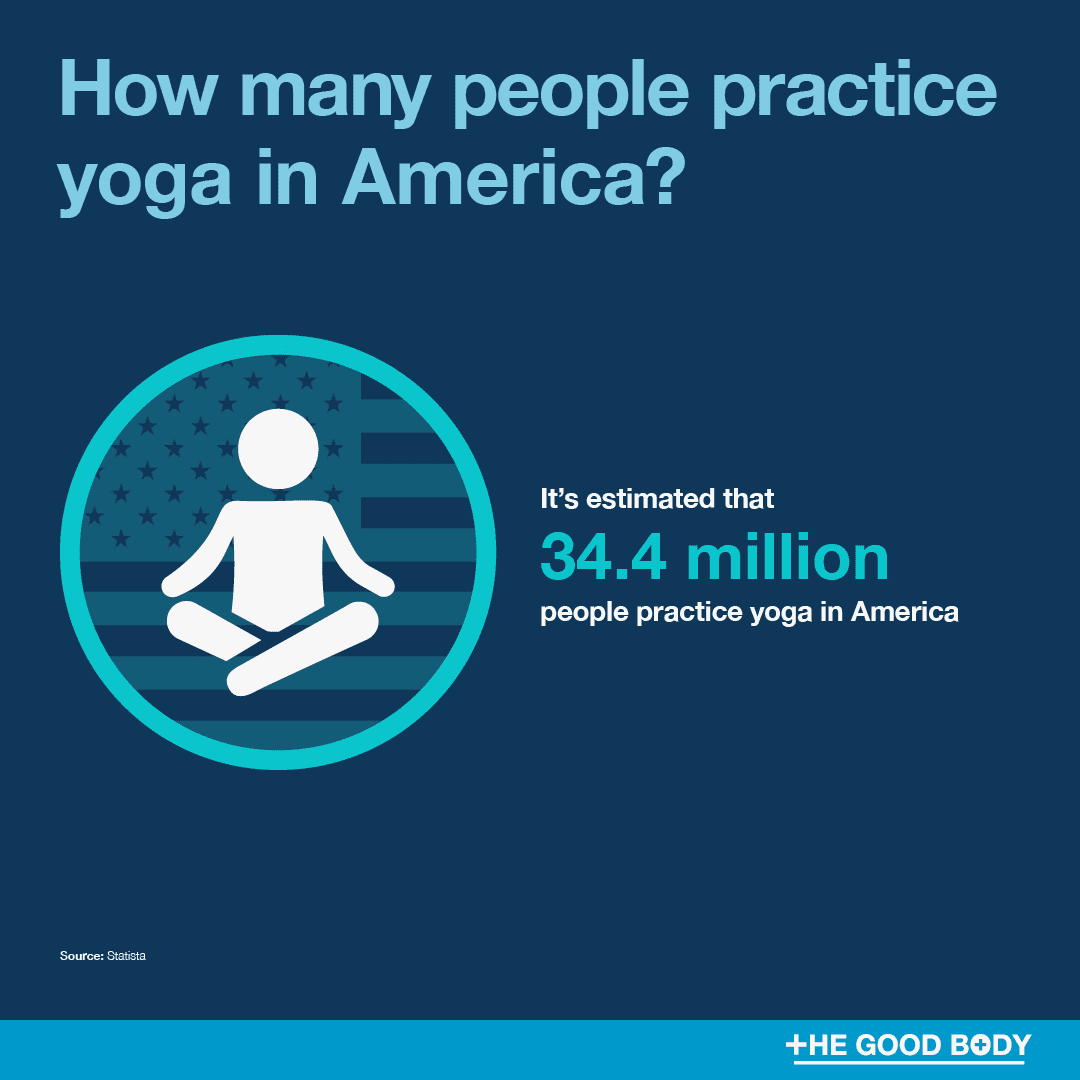
Are more people practicing yoga?
- The number of Americans practicing yoga grew by 63.8% in the last 12 years.
Statista report the number of people practicing yoga in 2010 was 21 million rising to 34.4 million in 2021.[3]
Yoga popularity facts show that 15% of Americans have practiced yoga in the last six months.[4]
Yoga was declared the most commonly used complementary health practice among US adults in 2017.[5]
Meditation has also grown in popularity and become another go-to complementary health approach for Americans, as stated by recent meditation statistics.
How many yoga studios are there in the US?
- As of 2023, there are 48,547 yoga and pilates studios in the US.[6]
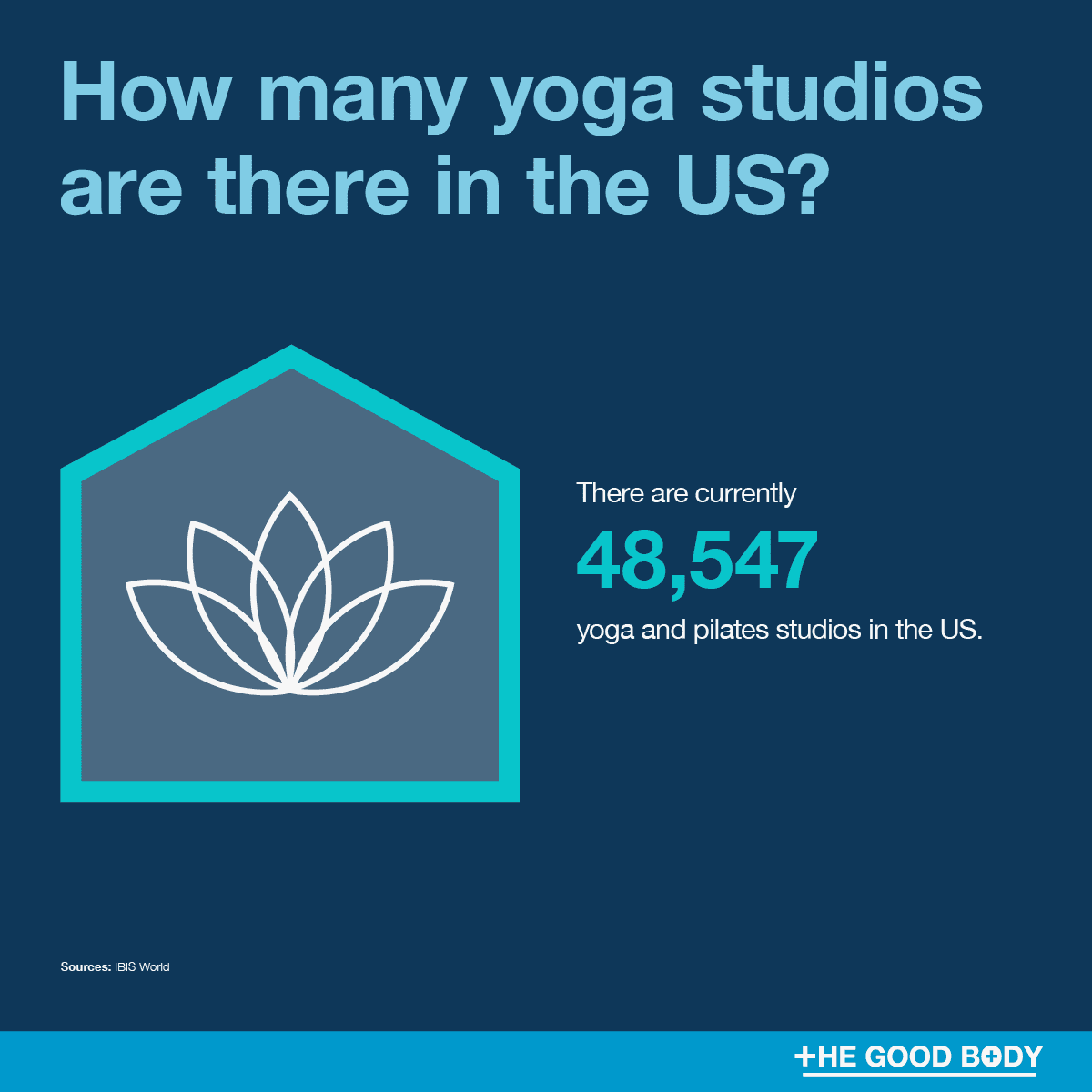
The number of studios increased by 5.3% between 2022 and 2023.
What type of yoga is most commonly practiced in America?
- Hot yoga, originally known as Bikram yoga, is the most practiced style.
Figures that are based on Google Trends data, put Hatha at second place.
There are many benefits of hot yoga, including improved flexibility and balance, and a few risks you need to know.
Yoga Demographics
Who practices yoga the most?
- Yoga is more popular with women aged between 30 and 49 years old.[9]
Improved heart health and relief from symptoms of the menopause, are just a few of the benefits of yoga for women.
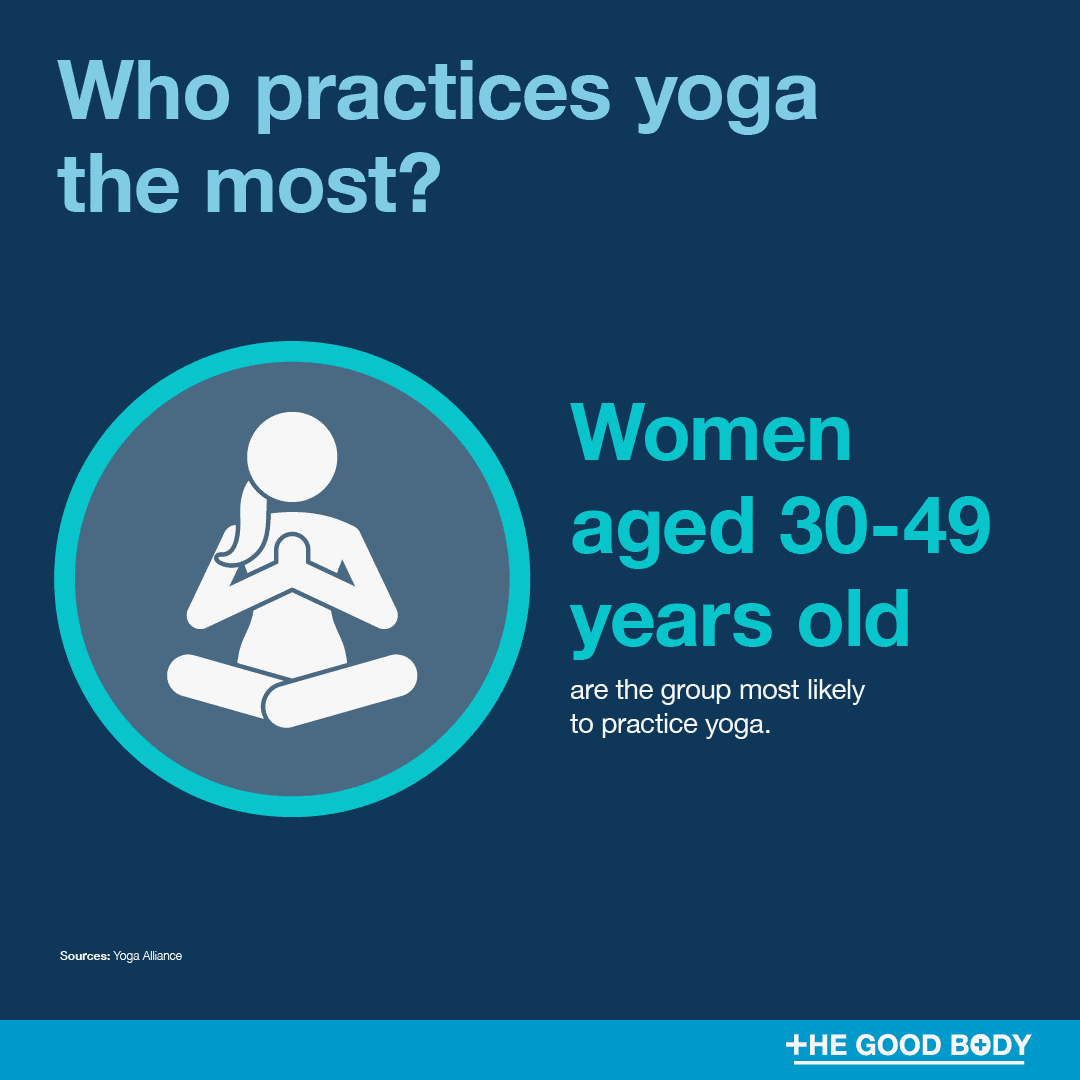
What percentage of yogis are men?
- According to the 2016 Yoga in America study, 28% of yoga practitioners are male.[10]
It was predicted that this number will grow, and it’s no surprise when we consider the large number of yoga benefits for men.
What age do most people do yoga?
People aged between 30 and 49 years old practice yoga more than any other age group.[11]
However yoga statistics show it’s growing in popularity with those over 50:
- 19% of yoga practitioners are 18 – 29 year olds
- 43% of yoga practitioners are 30 – 49 year olds
- 38% of yoga practitioners are 50+ year olds
In fact, the amount of adults over 50 practicing yoga has tripled over the last four years.
How many children practice yoga?
- 8.4% of children (4.9 million) in the US practice yoga.[12]
With countless yoga benefits for kids, you won’t be surprised to hear that the number has increased since 2012, when just 3.1% practiced.
Statistics also show that children are more likely to take part in yoga if one of their parents does, with 37% of yoga practitioners having children who also practice.[13]
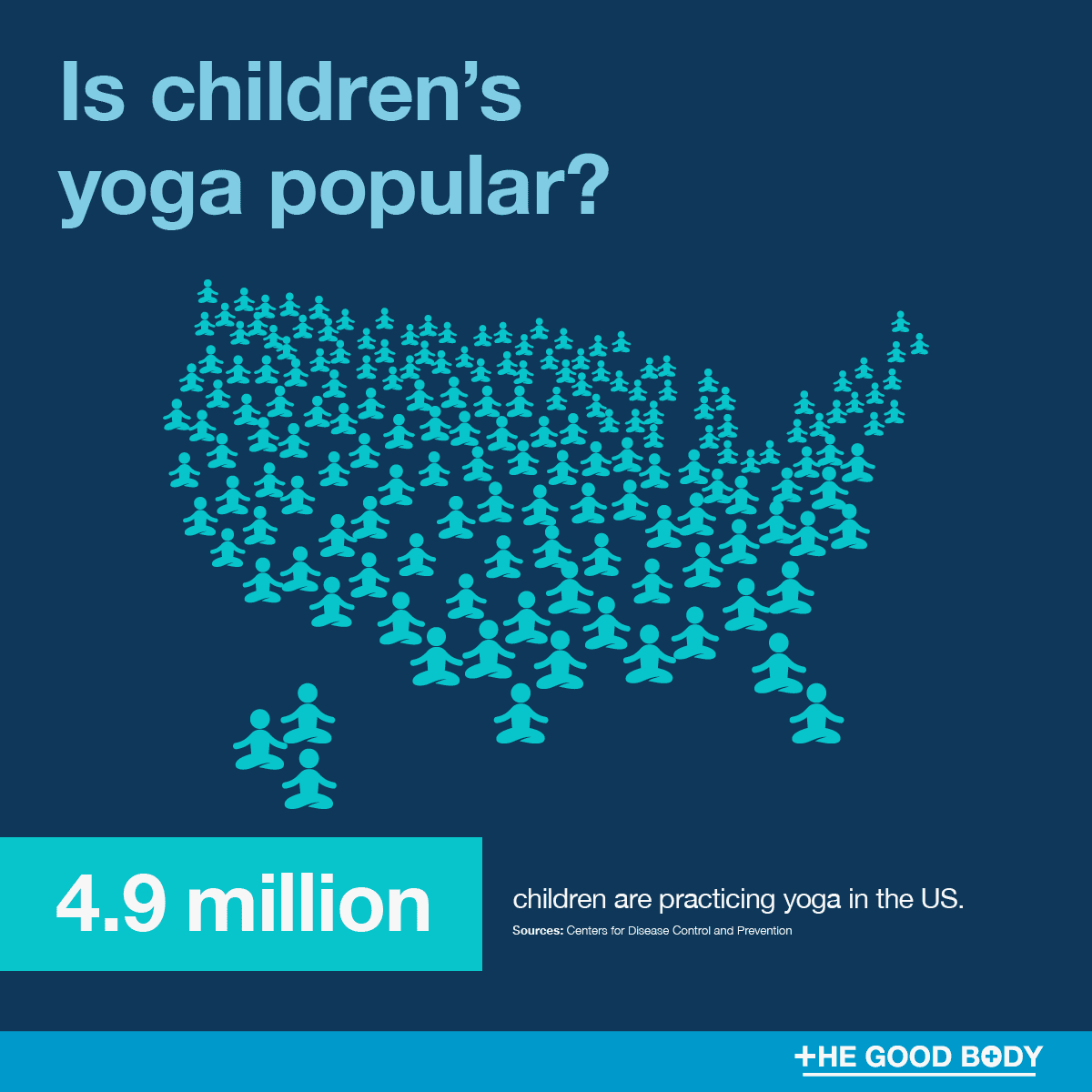
Yoga Market Size
How much is the yoga industry worth?
- The global yoga industry is worth over $88 billion.[14]
The US yoga market is valued at $12 billion and is shown to be growing at a rate of 9.8% annually.

How much do Americans spend on yoga?
Americans spend $16 billion on yoga classes and equipment each year and it looks set to keep rising.[15]
The Yoga in America Study revealed a $6 billion increase from $10 billion in 2012, for classes as well as equipment, clothing, books, yoga gifts and accessories.
Reasons to Practice Yoga
Can I lose weight by doing yoga?
- Research conducted by the National Institutes of Health Clinical Center found that yoga can help you lose weight.
Not only did respondents drop pounds during the research but they reported a changed mindset, with over 40% feeling more motivated to make healthier food choices.[16]
By adopting a more mindful approach to eating, they felt participants would be encouraged to keep the weight off.
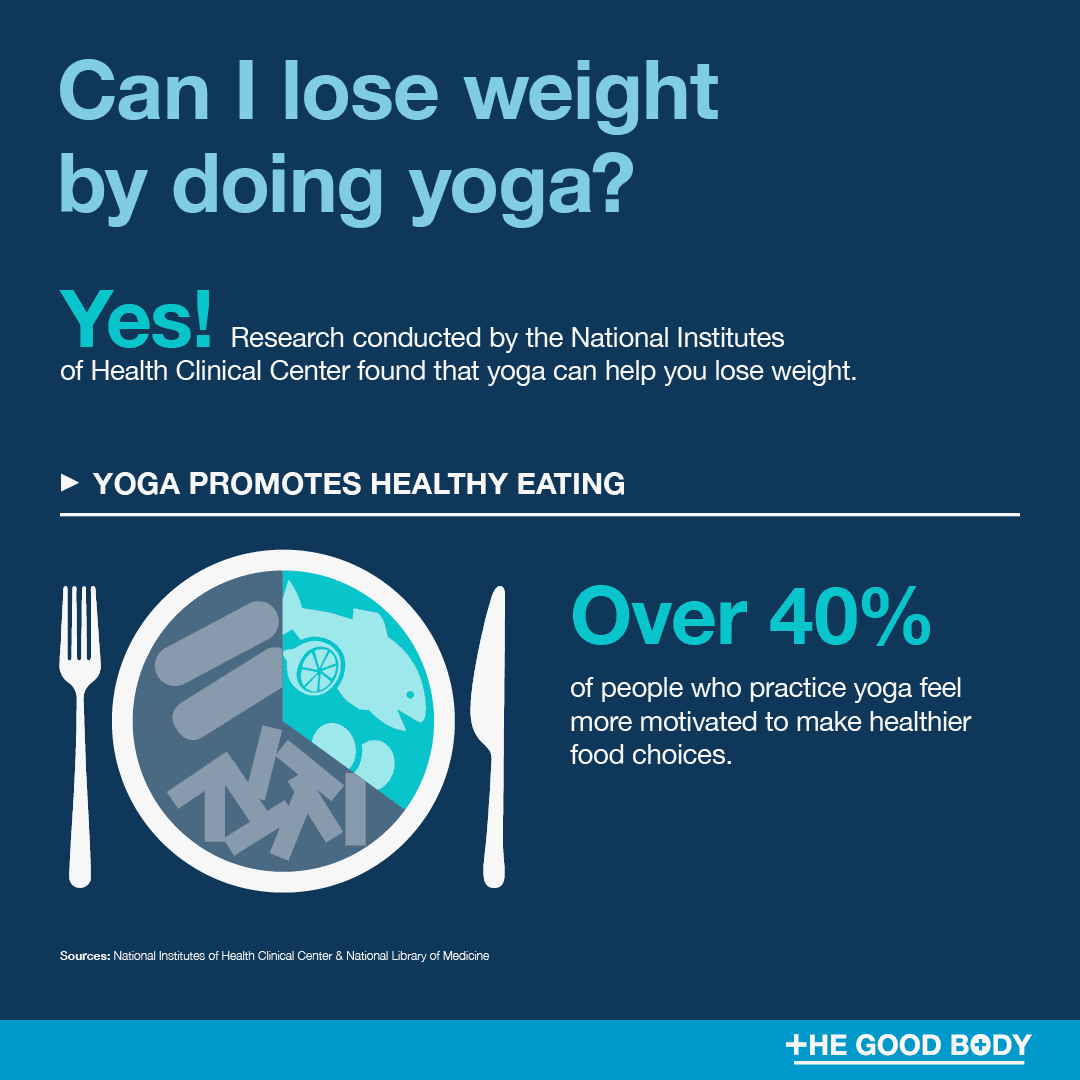
Does yoga actually help back pain?
Research published by the U.S. Department of Veterans Affairs has shown yoga to be an effective treatment for back pain.[17]
Back pain statistics show that 80% of Americans are struggling, so if you’re one of them, it could be worth a try!
Why is yoga good in the workplace?
Yoga in the workplace can improve productivity.
Research by the CDC showed that yoga practices in the workplace can improve the wellbeing of employees and in turn increase efficiency.[18]
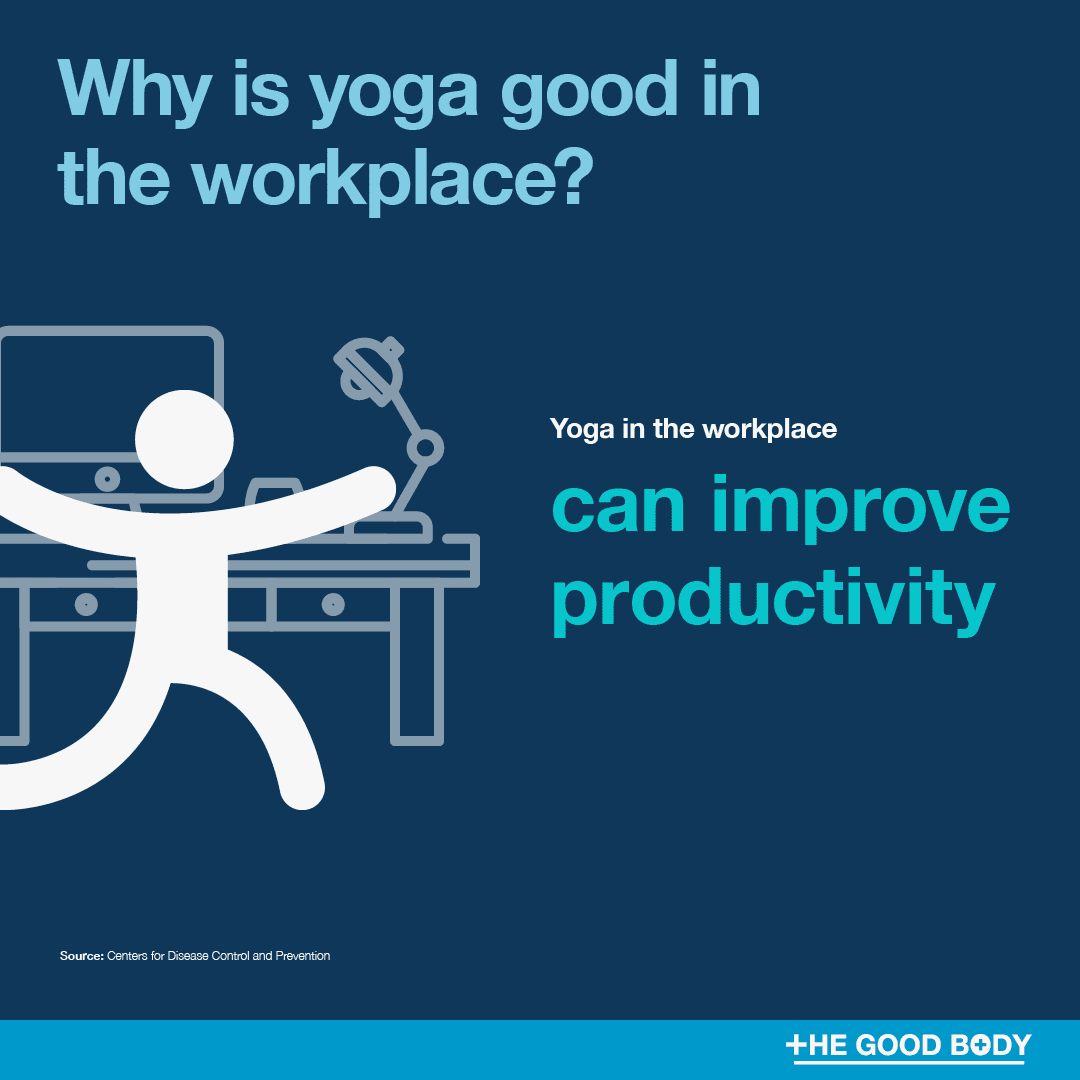
Is yoga good for anxiety and depression?
- Yoga can ease the symptoms of depression and anxiety.
Findings published in the British Journal of Sports Medicine, showed the more yoga sessions a respondent attended each week, the greater the reduction in their symptoms of depression and anxiety.[19]
There are a number of yoga poses for depression and anxiety that you can experiment with, to help calm a busy mind.
Can yoga reduce stress?
- The 2012 National Health Interview Survey revealed that 85% of yoga users feel the practice helps them to reduce their stress levels.[20]
It’s just one of plenty proven yoga benefits!
Why are more people doing yoga?
- According to the 2016 Yoga in America study, improving flexibility was the most popular reason for starting yoga.[21]
Stress relief, general fitness, improvement of overall health and physical fitness were also in the top five reasons for yoga participation.
The study revealed that there weren’t just benefits for their health too, yoga practitioners are more likely to live green, eat sustainably and volunteer their time to their local community.
Why should kids practice yoga?
An improved attention span, enhanced flexibility and strength, are just a handful of the many proven health advantages of yoga for children.
It is also beneficial for a number of childhood conditions including ADHD.
Researchers in Spain ran a study with 249 children looking at how physical exercise impacted the symptoms of Attention Deficit Hyperactivity Disorder (ADHD).[22]
Yoga proved particularly successful in alleviating core symptoms of the condition.
However children do require supervision when practicing yoga as some poses can be damaging on their bodies.
Is it good to do yoga before bed?
- A National Health Statistics Report, published by the CDC, revealed that nearly 60% of yogis feel that practicing yoga improves their sleep.[23]
With fascinating sleep statistics coming to light about the current state of people’s slumber, yoga was found to help yoga practitioners fall asleep faster.
Yoga Injuries
How common are yoga injuries?
- 10% of people experience pain following a yoga session, as highlighted by research published in the Journal of Bodywork and Movement Therapies.[24]
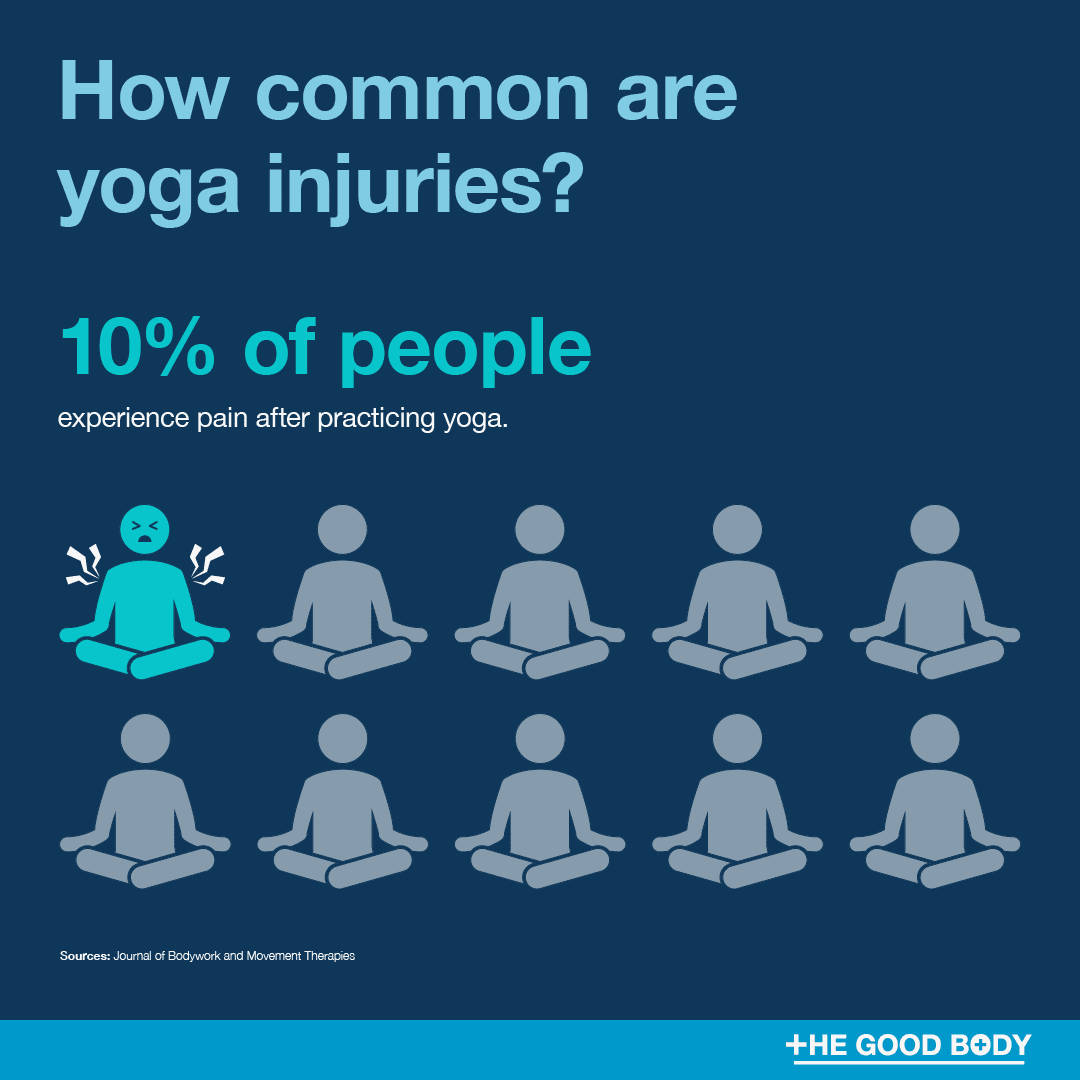
There is evidence to show that yoga causes as many injuries as other sports.
The Faculty of Health Science at Sydney University carried out a study in 2017 which followed 354 respondents with musculoskeletal pain, who had previously taken yoga classes.[25]
21% of participants said yoga made their pain worse, with more than 10% reporting that they felt yoga had caused their pain.
The injury rate for yoga is also steadily increasing.
The ongoing monitoring by the National Electronic Injury Surveillance System, found that in 2001 there were 9.5 injuries per 100,000 participants with the number rising to 17 per 100,000, making it comparable to sports such as weight-training and golf.[26]
The rise is believed to have come from unqualified teachers offering classes to eager beginners.
However compare the number of yoga injuries to another popular sport such as basketball (149 injuries per 100,000) and you’ll see that statistically yoga is much safer.[27]
The majority of yoga injuries are to the hips, knees, ankles or feet.[28]
We spoke to chiropractor Kai Tiltmann who told us that it’s simply a case of making sure that you’re doing the poses correctly. He gave some insights and advice:
Our current workout culture, including CrossFit, HIIT (high intensity interval training), and even yoga, can have negative consequences for the low back. In a way it’s ironic since we exercise to be strong and stay fit. However when done incorrectly these activities can cause low back pain and major tissue damage including fractures.
What is the most dangerous yoga pose?
- The headstand is thought to be the most dangerous yoga pose.[29]
A study by the Department of Internal and Integrative Medicine in Germany, found that the shoulder stand and variations of the lotus pose also caused a higher number of injuries than other yoga poses.
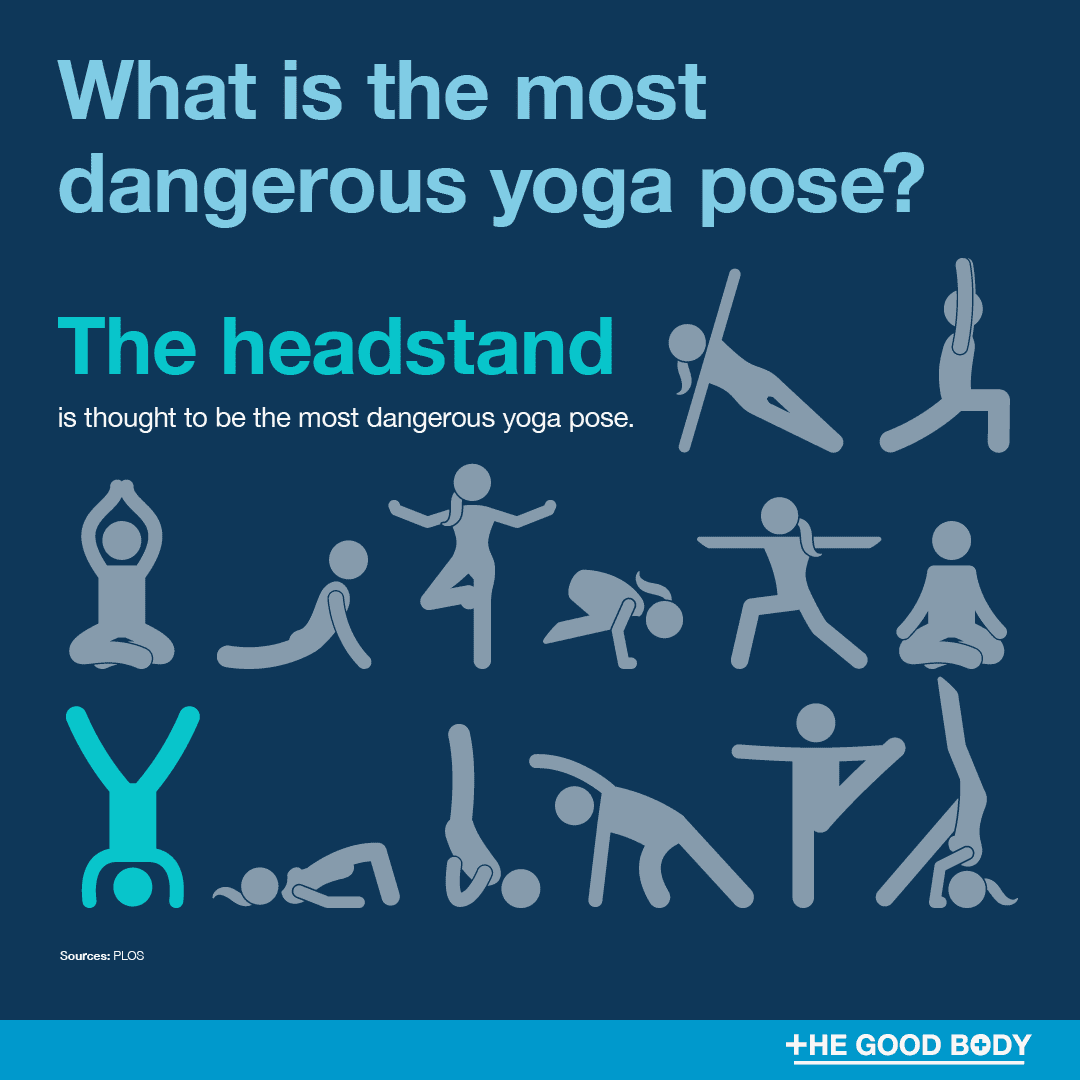
The Growth of Yoga Around the World
How many people in the world practice yoga?
- Global yoga statistics suggest there are 300 million yoga practitioners around the world.[30]
Though yoga originated in India, many countries across the world have now claimed it as their own.
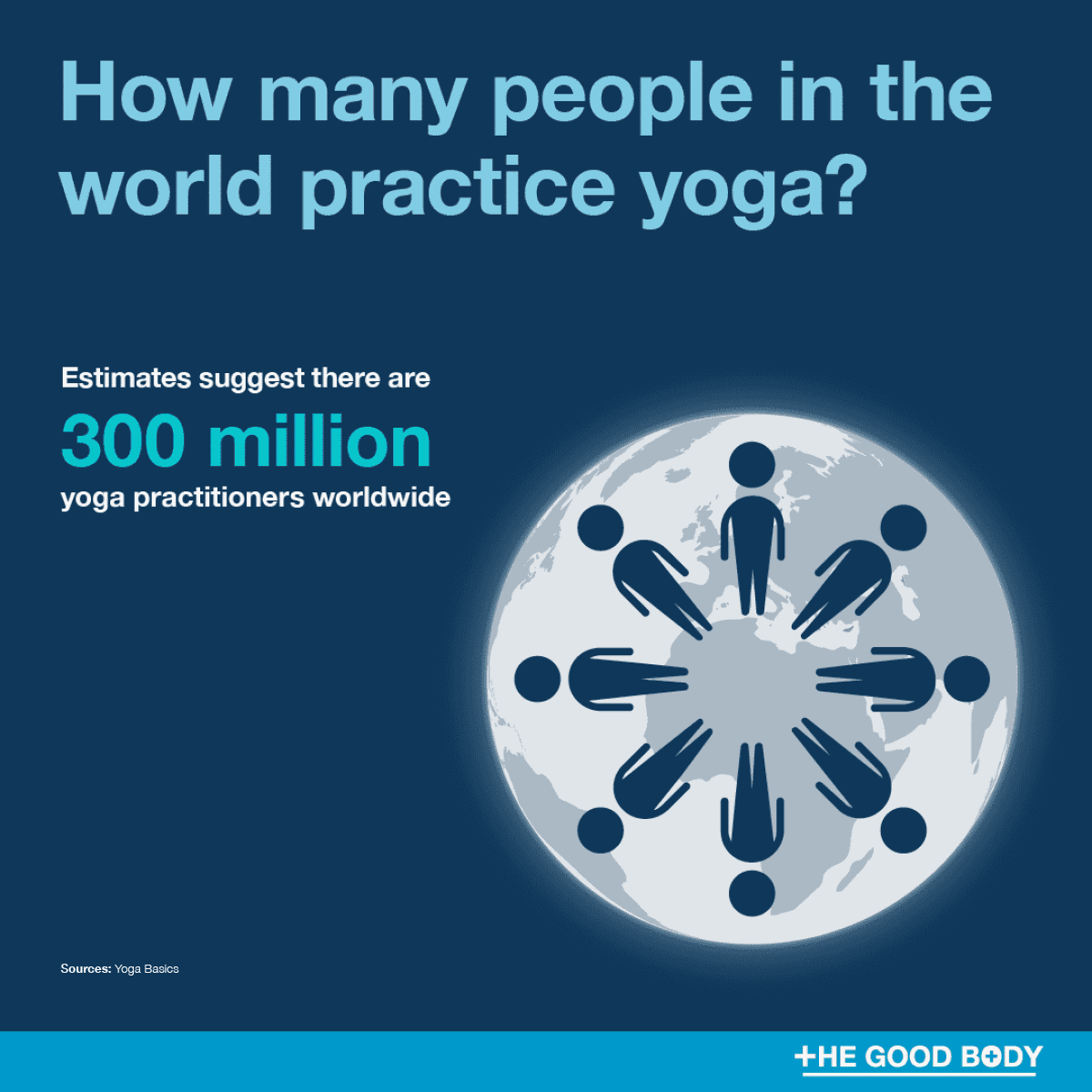
Where in the world is yoga most popular?
- Canada is the country where yoga is the most popular.[31]
While it can be difficult to monitor yoga popularity by country, Google Trend data shows which countries Google ‘yoga’ and associated terms the most, which gives a good indication of popularity.
At the time of writing, the top five countries googling about yoga were:
• Canada
• Singapore
• New Zealand
• Australia
• Switzerland
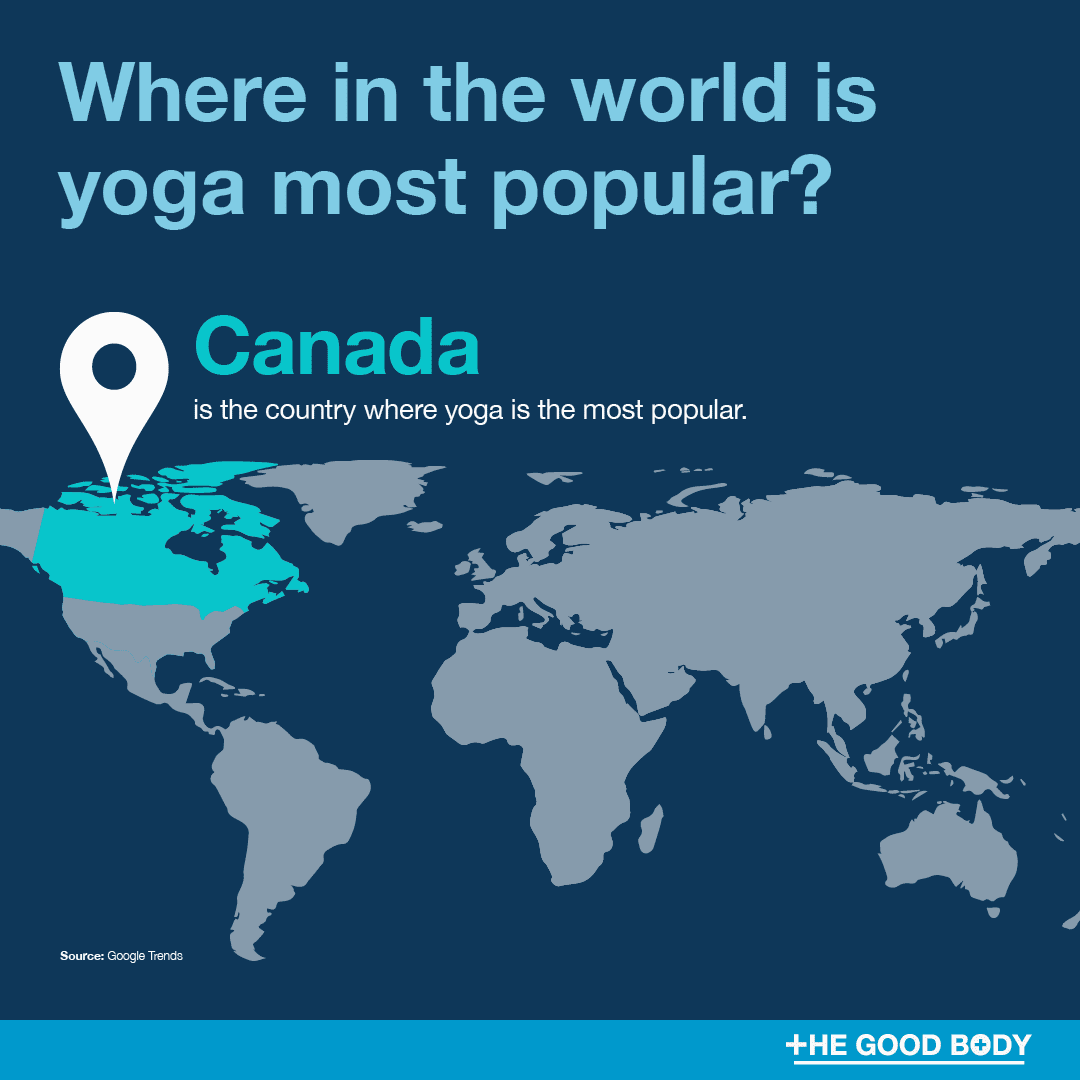
Supporting the Google Trend data is a study by The Frazer Institute, which found yoga was one of the top three most commonly used complementary therapies by the population of Canada over a lifetime:[32]
- Massage (44%)
- Chiropractic Care (42%)
- Yoga (27%)
- Relaxation Techniques (25%)
- Acupuncture (22%)
Want more stats?
We’ve gathered the latest fitness data and curated a roundup of exercise statistics for 2023.
Follow the link and you can find out just how many Americans exercise each day. The number might surprise you…
References
- Statista (2018). Number of yoga participants in the United States from 2010 to 2021 [Online]. Available from: https://www.statista.com/statistics/191625/participants-in-yoga-in-the-us-since-2008/ [Accessed 26 September 2023]. ↩
- Wei, M. (2016). New survey reveals the rapid rise of yoga — and why some people still haven’t tried it [Online]. Harvard Health Blog. Available from: https://www.health.harvard.edu/blog/new-survey-reveals-the-rapid-rise-of-yoga-and-why-some-people-still-havent-tried-it-201603079179 [Accessed 26 September 2023]. ↩
- Statista (see footnote 1) ↩
- Wei, M. (see footnote 2) ↩
- National Institutes of Health (NIH) (2018). More adults and children are using yoga and meditation [Online]. Available from: https://www.nih.gov/news-events/news-releases/more-adults-children-are-using-yoga-meditation [Accessed 26 September 2023]. ↩
- IBISWorld (2023). Pilates & Yoga Studios in the US - Number of Businesses 2004–2029 [Online]. Available from: https://www.ibisworld.com/industry-statistics/number-of-businesses/pilates-yoga-studios-united-states/ [Accessed 26 September 2023]. ↩
- Yoga Alliance (2020). Yoga Alliance [Online]. Available from: https://www.yogaalliance.org/About_Yoga_Alliance [Accessed 26 September 2023]. ↩
- Johnson, N. (2023). The Honest Truth About A Yoga Instructor Salary 2023 [Online]. BookRetreats. Available from: https://bookretreats.com/blog/yoga-instructor-salary/ [Accessed 26 September 2023]. ↩
- Yoga Alliance & Yoga Journal (2016). The 2016 Yoga in America Study Conducted by Yoga Journal and Yoga Alliance [Online]. Available from: https://www.yogaalliance.org/Portals/0/2016%20Yoga%20in%20America%20Study%20RESULTS.pdf [Accessed 26 September 2023]. ↩
- Yoga Alliance & Yoga Journal (see footnote 9) ↩
- Yoga Alliance & Yoga Journal (see footnote 9) ↩
- Black, L.I. et al (2018). Use of Yoga, Meditation, and Chiropractors Among U.S. Children Aged 4–17 Years [Online]. National Center for Health Statistics. Available from: https://www.cdc.gov/nchs/products/databriefs/db324.htm [Accessed 26 September 2023]. ↩
- Yoga Alliance & Yoga Journal (see footnote 9) ↩
- Wellness Creative Co (2023). Yoga Industry Growth, Market Trends & Analysis 2023 [Online]. Available from: https://www.wellnesscreatives.com/yoga-industry-trends/ [Accessed 26 September 2023]. ↩
- Yoga Alliance & Yoga Journal (see footnote 9) ↩
- Ross, A. et al (2016). A Different Weight Loss Experience: A Qualitative Study Exploring the Behavioral, Physical, and Psychosocial Changes Associated with Yoga That Promote Weight Loss [Online]. Evidence-Based Complementary and Alternative Medicine. Available from: https://www.ncbi.nlm.nih.gov/pmc/articles/PMC4995338/ [Accessed 26 September 2023]. ↩
- Chang, D.G. et al (2016). Yoga as a treatment for chronic low back pain: A systematic review of the literature [Online]. Journal of orthopedics & rheumatology. Available from: https://www.ncbi.nlm.nih.gov/pmc/articles/PMC4878447/ [Accessed 26 September 2023]. ↩
- Kachan, D. et al (2017). Prevalence of Mindfulness Practices in the US Workforce: National Health Interview Survey [Online]. Preventing Chronic Disease. Available from: https://www.cdc.gov/pcd/issues/2017/16_0034.htm [Accessed 26 September 2023]. ↩
- Brinsley, J. et al (2020). Effects of yoga on depressive symptoms in people with mental disorders: a systematic review and meta-analysis [Online]. British Journal of Sports Medicine. Available from: https://bjsm.bmj.com/content/55/17/992 [Accessed 26 September 2023]. ↩
- U.S. Department of Health & Human Services (2012). Wellness-Related Use of Common Complementary Health Approaches Among Adults: United States, 2012 [Online]. Available from: https://www.nccih.nih.gov/research/wellness-related-use-of-common-complementary-health-approaches-among-adults-united-states-2012 [Accessed 26 September 2023]. ↩
- Yoga Alliance & Yoga Journal (see footnote 9) ↩
- Cerrillo-Urbina, A.J. et al (2015). The effects of physical exercise in children with attention deficit hyperactivity disorder: a systematic review and meta-analysis of randomized control trials [Online]. Child: Care, Health and Development. Available from: https://pubmed.ncbi.nlm.nih.gov/25988743/ [Accessed 26 September 2023]. ↩
- U.S. Department of Health & Human Services (see footnote 20) ↩
- Campo, M. et al (2018). Musculoskeletal pain associated with recreational yoga participation: A prospective cohort study with 1-year follow-up [Online]. Journal of Bodywork and Movement Therapies. Available from: https://www.sciencedirect.com/science/article/abs/pii/S1360859217301225 [Accessed 26 September 2023]. ↩
- Pappas, E. (2017). The yoga paradox: how yoga can cause pain and treat it [Online]. The Conversation. Available from: https://theconversation.com/the-yoga-paradox-how-yoga-can-cause-pain-and-treat-it-80138 [Accessed 26 September 2023]. ↩
- Swain, T.A. and McGwin, G. (2016). Yoga-Related Injuries in the United States From 2001 to 2014 [Online]. Orthopaedic Journal of Sports Medicine. Available from: https://journals.sagepub.com/doi/full/10.1177/2325967116671703 [Accessed 26 September 2023]. ↩
- Carter, E.A., Westerman, B.J. and Hunting, K.L. (2011). Risk of Injury in Basketball, Football, and Soccer Players, Ages 15 Years and Older, 2003–2007 [Online]. Journal of Athletic Training. Available from: https://www.ncbi.nlm.nih.gov/pmc/articles/PMC3418954/ [Accessed ]. ↩
- Bekhradi, A. et al (2018). Although the injury rate of yoga is low, nearly two-thirds of musculoskeletal injuries in yoga affect the lower extremity: a systematic review [Online]. Journal of ISAKOS: Joint Disorders & Orthopaedic Sports Medicine. Available from: https://www.sciencedirect.com/science/article/pii/S2059775421002972 [Accessed ]. ↩
- Cramer, H., Krucoff, C. and Dobos, G. (2013). Adverse Events Associated with Yoga: A Systematic Review of Published Case Reports and Case Series [Online]. PLoS ONE. Available from: https://journals.plos.org/plosone/article?id=10.1371/journal.pone.0075515 [Accessed 26 September 2023]. ↩
- Heilbron, C. (2021). Where Is Yoga the Most Popular in the World? [Online]. YogaBasics.com. Available from: https://www.yogabasics.com/connect/yoga-blog/yoga-popularity-by-country/ [Accessed 26 September 2023]. ↩
- Google Trends (2023). Yoga [Online]. Available from: https://trends.google.com/trends/explore?date=all&q=yoga [Accessed 26 September 2023]. ↩
- Esmail, N. (2017). Complementary and Alternative Medicine: Use and Public Attitudes 1997, 2006, and 2016 [Online]. Fraser Institute. Available from: https://www.fraserinstitute.org/studies/complementary-and-alternative-medicine-use-and-public-attitudes-1997-2006-and-2016 [Accessed 26 September 2023]. ↩

